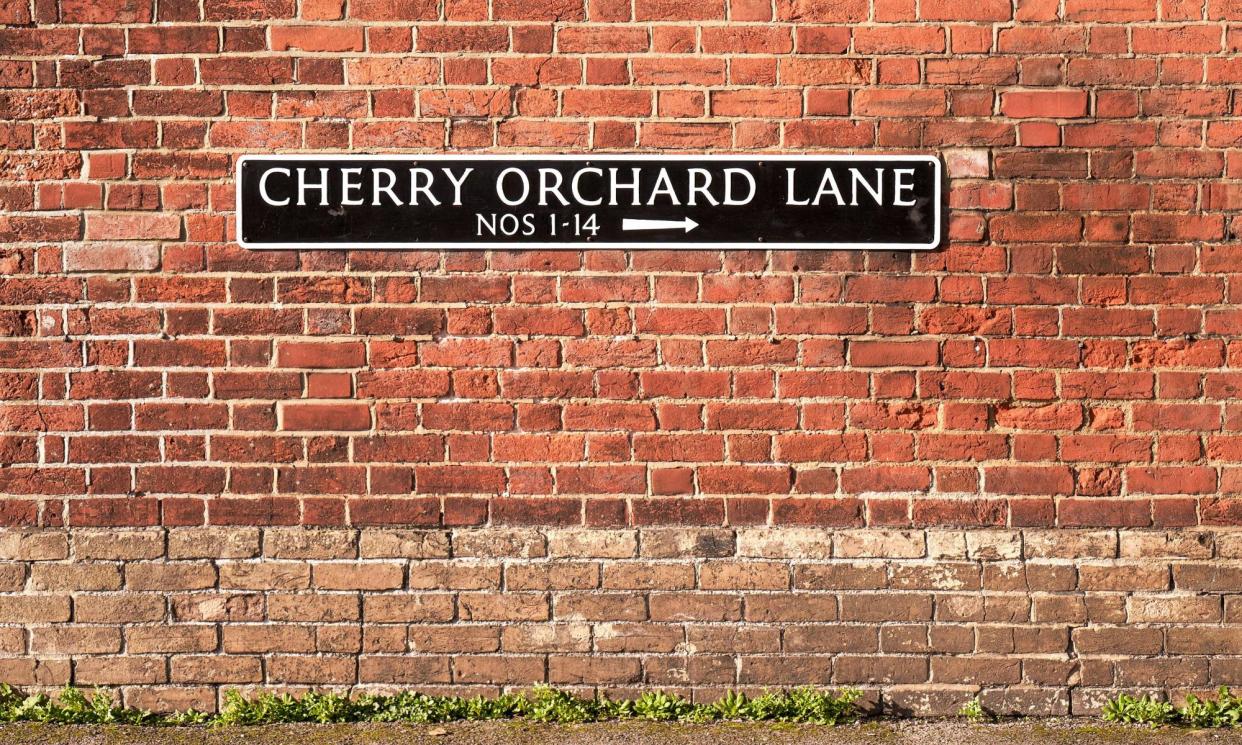Lost orchards and blossom flourish in placenames across England and Wales

Over the last century orchards and blossom trees have been slipping out of the British landscape at an alarming rate but the “ghosts” of lost flowers are glimpsed in an increasing number of placenames recalling the vanished pinks and whites, researchers have found.
A National Trust study has discovered that the number of street, house and farm names relating to orchards and blossom has doubled across England and Wales since the turn of the 20th century, a period in which more than half of traditional orchards have disappeared.
The conservation charity describes these names as “fossil blossom”, memories of what used to be there, melancholy reminders of what has been lost.
Prof Matthew Heard, the trust’s head of environmental research and data, said: “Over the last century, blossom has been disappearing from our landscapes. But we clearly haven’t lost our connection to them – their memory is something we seem to want to keep alive
“How many of us know of an Orchard Close, or a Chestnut Avenue? Placenames can point to our values, beliefs and shared stories – they help us navigate cultural memory as much as they do the landscape itself. These names are acting as ‘fossil blossom’.”
The charity analysed almost a million names in England and Wales, ahead of its Blossom week (20-28 April) programme, which includes celebrations of the flowers and a focus on its plans to replant blossom-rich trees.
It found the number of placenames associated with blossom had doubled from 3% (23,000 of the 700,000 placenames examined) in 1900 to 6% (51,000 of 912,000 names) in 2023.
Some areas seem keener than others on orchard and blossom-related names. In Hartlepool, County Durham, the number of names rose from 1.2% in 1900 to 14.5% in 2023. But in Reading in Berkshire the use of names linked with blossom has declined from about 8% in 1900 to 3% today.
The study concluded that more than half of orchard-related placenames on maps today do not have any direct connection with an existing orchard.
Some names, such as ones containing “Grove”, were popular in 1900 and now. However, the researchers spotted 600 Orchard Closes and 264 Chestnut Closes now – but none in 1900.
The study found that the names have become less distinctive and diverse. Tom Dommett, the trust’s head of historic environment, said: “It appears that our blossoming landscape – or at least the way we name it – has become more homogenous, less distinctive and less diverse – with less use of specific varieties as part of these naming conventions, such as perry in south-west England and West Midlands.”
In Wales, there has been a halving of blossom-related Welsh-language placenames between 1900 and 2023, according to the research. For example, there were 16 places called Llwyn-Du (black hedgerow/grove) in 1900 but only one now.
Dommett said: “The results in Wales resonate with ongoing concerns by campaigners that Welsh placenames are being lost. These findings are very likely linked to the prevalence of Welsh speakers as a whole.”
Finally, a nugget for fans of Mary Poppins, who may be interested to learn the study found only one Cherry Tree Lane (the Banks family address) in 1900, 34 years before the first book was published – but 45 now.

 Yahoo News
Yahoo News 